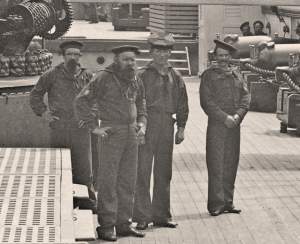Record Data
Source citation
Reprinted in Samuel Blatchford, United States. District Court, Reports of cases in prize: argued and determined in the circuit and district courts of the United States for the southern district of New York, 1861-65 (New York: Government Printing Office, 1866), 96.
Type
Judicial record
Date Certainty
Exact
Transcriber
John Osborne
Transcription date
Transcription
The following text is presented here in complete form, as it originally appeared in print. Spelling and typographical errors have been preserved as in the original.
Vessel and cargo condemned as enemy property, and for a violation of the blockade.
(Before Judge Betts, January, 1862.)
Betts, J.: The return into court of the proof taken by the prize commissioners having been opened by order of the court, and judgment of condemnation of the vessel and cargo being moved thereon by the United States attorney, and no person appearing to oppose the same, an interlocutory order of condemnation, pursuant to the motion, was granted. On the submission of the proof so brought in for the consideration of the court, the same were examined and showed the case to be this: The vessel was captured with her cargo, by the United States ship-of-war Penguin, on the 25th of November, 1861. She was first discovered making for a port six or seven miles off North Edisto, in South Carolina, and twelve or fifteen miles southeast of Charleston; but on being pursued by the Penguin, veered her course northerly, in the direction of New York.
She exhibited to the captors a certificate of British registry to Pembroke Saunders, of Nassau, N. P., merchant, executed November 13, 1861, and a certificate of the due clearance of her cargo by the receiver general at that port, November 16, and an affidavit taken before the British consul there resident, of Henry R. Saunders, to the verity of the invoice of the cargo. With these documents were bills of parcels of the cargo shipped, and the shipping articles purporting to have been executed by the master and crew of the schooner, on the 15th of November, for a voyage from Nassau to New York, and back to the port of Nassau.
On the 23d of November the schooner was boarded by Lieutenant Wiltse, of the United States navy, from the ship-of-war St. Lawrence, off the coast of Georgia, who indorsed on her register a warning not to enter any port south of Hampton roads, on account of the blockade.
Two of the seamen, examined in preparatorio, testified that they had no knowledge of any attempt or design on the part of the schooner to enter a blockaded port, nor any actual knowledge that Charleston or the contiguous ports were blockaded, and supposed she was truly performing a voyage from Nassau to New York. One of them, however, admits that the vessel had run so near the South Carolina coast, and headed so directly towards it, as to render her movements suspicious.
The other witness, however, on his examination before the prize commissioners, made an unreserved and apparently ingenuous and credible exposure of the enterprise.
He was the mate of the vessel and part owner of her and the cargo. He states that he and her master, and the other owners of the vessel and cargo, have for very many years been residents, with their families, in Savannah, Georgia. The vessel was furnished by them solely with their own funds, as was the cargo. The voyage commenced from Savannah to Nassau. The vessel was there laden with cargo owned by them, and sailed for their benefit. They had long known of the blockade of Savannah and Charleston, and of the southern coast generally. Her voyage was to be from Savannah to Nassau, and back from Nassau to Savannah, or some such blockaded port as they could get her into; and, after she departed from Nassau she was never directed towards New York, nor intended to make that course, further than that, on discovering that she was chased by the United States war-ship which captured her, she assumed a course towards New York, hoping to escape the pursuit.
It is needless to detail the testimony further. There are no facts produced in contradiction of this evidence, and it is conclusive of the criminality and confiscability of the vessel and cargo, both as showing it to be wholly enemy property, and as demonstrating that if it could successfully wear a neutral cloak, it was procured, shipped, and transported for the purpose of evading the blockade it was attempting to run when captured.
Judgment and condemnation as lawful prize of vessel and cargo.

